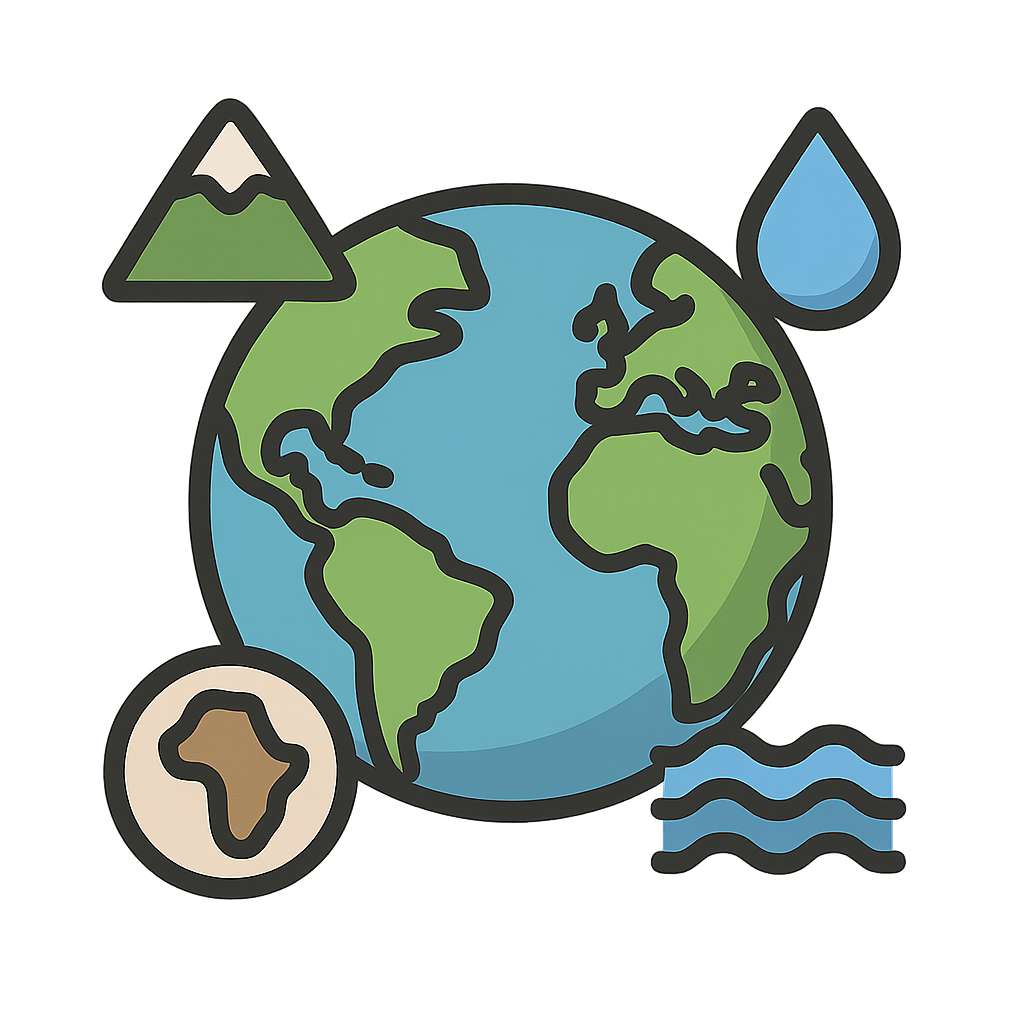The Great Drifting Puzzle
Hello there! Have you ever looked at a map of the world and wondered how it all came to be? I bet you have. Well, I can let you in on the secret, because I’m the one who holds all the pieces! I am the giant stretches of land you live on and the deep, blue waters you sail across. I am the Continents and Oceans. Before people had maps, they only knew their own small part of me. They saw my sandy deserts, my tall mountains, and my sparkling shores. They felt my ground beneath their feet and the cool splash of my waves. But they couldn’t see the whole picture. They didn’t know that my landmasses were like giant puzzle pieces floating on a very, very slow-moving river of rock. For a long time, the biggest mystery was how all my pieces fit together. They seemed so far apart, separated by my enormous oceans. Little did they know, I was holding clues for them to find—in the shape of my coastlines, in the fossils buried deep in my soil, and in the very mountains that rose from my crust. It was a puzzle just waiting for a clever detective to come along and start putting the pieces together, and it would take a very long time for them to solve it.
For hundreds of years, brave explorers sailed across my waters, drawing the edges of my land. As their maps got better, a few clever people started to notice something amazing. Back in 1596, a mapmaker named Abraham Ortelius looked at a world map and thought, 'Hmm, the eastern coast of South America looks like it could snuggle right up against the western coast of Africa!'. He was one of the very first to guess that my lands hadn’t always been apart. But it was just a guess, and most people didn’t pay it much mind. Then, much later, a German scientist named Alfred Wegener came along. In 1912, he took that idea and ran with it! He was like a detective looking for evidence. He traveled the world and gathered clues that no one else had pieced together. He saw that fossils of the same ancient plants and animals were found on continents that are now thousands of miles apart across my oceans. How could a little lizard have swum all that way? It couldn't have! He also noticed that rock formations and mountain ranges on different continents seemed to line up, like matching stripes on two pieces of a ripped t-shirt. It was all too perfect to be a coincidence. Wegener proposed a bold idea he called 'continental drift.' He said that all my continents were once joined together in one giant supercontinent. He even gave it a name: Pangea, which means 'all lands.' He imagined Pangea breaking apart and my continents slowly drifting to where they are today. At first, many scientists laughed at his idea. They asked, 'How could a whole continent possibly move? What force is strong enough to push it?'. Wegener couldn't fully explain what invisible engine was powerful enough to push me around. It wasn’t until many years after he was gone that other scientists discovered the answer. They found that my surface is broken into giant slabs called tectonic plates. These plates are always moving, carrying my continents and oceans along with them. This discovery, called plate tectonics, finally proved that Alfred Wegener’s amazing idea was right all along!
Today, you know me as seven continents—Africa, Antarctica, Asia, Australia, Europe, North America, and South America—and five great oceans. I give you incredible places to live, from bustling cities to quiet forests. My oceans connect everyone, creating weather that brings rain to farms and creating highways for giant ships carrying goods and ideas. And guess what? I’m still moving! It’s happening right now, but so slowly—only about as fast as your fingernails grow—that you can’t feel it. The world map you see today is just a snapshot in my very long life. Millions of years from now, my continents will be arranged in a whole new way. My story is a reminder that everything is connected. Even things that seem far apart might have once been close together. I am the beautiful, ever-changing stage for your life and all your adventures. So keep exploring, stay curious, and remember that we all share one amazing, drifting home.
Reading Comprehension Questions
Click to see answer
